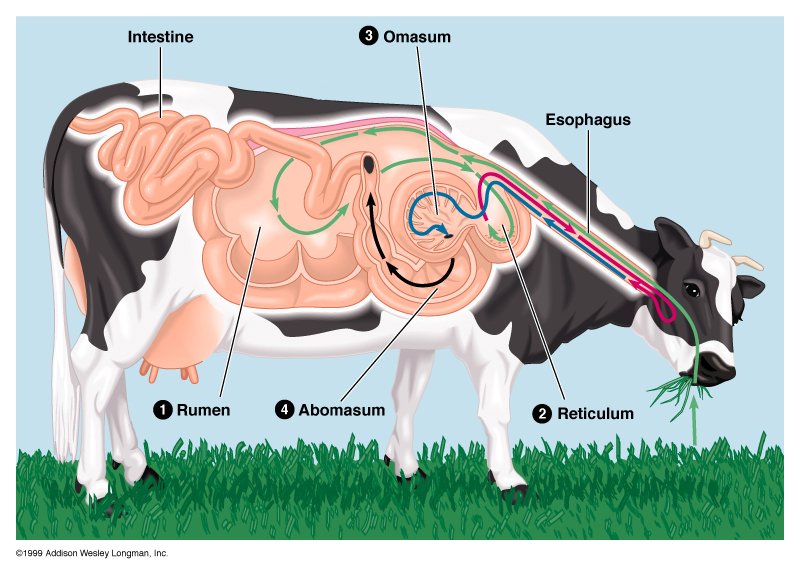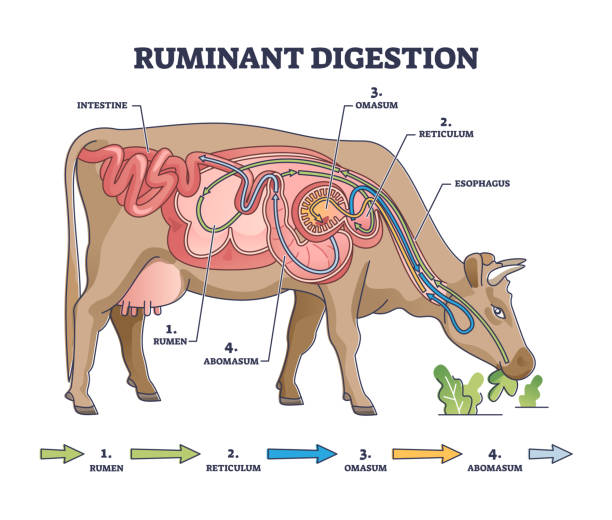Animal With Multiple Stomachs: Unraveling Nature's Digestive Marvels
When it comes to the intricacies of animal digestion, there is a fascinating phenomenon that sets certain creatures apart. Some animals possess the remarkable ability to have multiple stomachs, a characteristic that plays a crucial role in their digestive processes. In this article, we will explore the world of animals with multiple stomachs, unveiling the unique adaptations that enable them to efficiently extract nutrients from their diets.
1. Understanding Animal Digestion
Before we delve into the specifics of animals with multiple stomachs, let us first establish a basic understanding of animal digestion. In the animal kingdom, organisms have developed diverse digestive systems to break down food and extract essential nutrients required for survival.

Animal Digestion
2. The Marvel of Multiple Stomachs
a. Definition and Significance
Animals with multiple stomachs, also known as ruminants, possess a specialized digestive system that allows them to effectively process plant-based diets. The presence of multiple stomach compartments enhances their ability to extract nutrients from fibrous materials that are otherwise challenging to digest.
b. Examples of Animals with Multiple Stomachs
Several animal species exhibit the fascinating characteristic of having multiple stomachs. Some prominent examples include cows, sheep, goats, giraffes, and deer. Each of these creatures has evolved unique adaptations to maximize the efficiency of their digestive processes.
3. The Ruminant Digestive System

Ruminant Digestive System
a. Four-Chambered Stomach
Ruminants possess a four-chambered stomach that consists of the rumen, reticulum, omasum, and abomasum. Each chamber serves a specific purpose in the overall digestive process, facilitating the breakdown and absorption of nutrients.
b. Rumen: The Fermentation Chamber
The rumen is the largest chamber and acts as a fermentation vat. It contains billions of microorganisms, including bacteria and protozoa, which assist in breaking down complex carbohydrates present in the animal's diet.
c. Reticulum: The Hardware Compartment
The reticulum, located adjacent to the rumen, serves as a filter to prevent larger indigestible materials from progressing further into the digestive system. It also aids in the regurgitation of food for re-chewing, known as cud.
d. Omasum: The Water Absorber
The omasum functions primarily as a water absorber. It reduces the moisture content of the partially digested food and helps extract additional nutrients before the material moves to the final chamber.
e. Abomasum: The True Stomach
The abomasum is comparable to the stomach found in monogastric animals, such as humans. It secretes gastric juices and enzymes that further break down the food, allowing for nutrient absorption.
4. Adaptations and Benefits
a. Microbial Fermentation
The presence of microorganisms in the rumen enables ruminants to digest complex carbohydrates, such as cellulose, which are abundant in plant-based diets. These microorganisms produce enzymes that break down these compounds, providing the animals with an additional source of energy.
b. Cud Chewing and Rumen Contractions
Ruminants have the ability to regurgitate food from the rumen and re-chew it. This process, known as rumination or cud chewing, aids in further breaking down the fibrous material, increasing the surface area for microbial digestion.
c. Efficient Nutrient Extraction
The multi-chambered digestive system of ruminants allows for thorough digestion and extraction of nutrients from plant material. This adaptation is particularly advantageous in environments where food resources are limited or when animals rely primarily on plant-based diets.
5. Examples of Ruminant Adaptations
a. Cow: The Quintessential Ruminant
Cows are iconic examples of animals with multiple stomachs. Their digestive system is highly efficient at processing cellulose, enabling them to thrive on diets predominantly composed of grass and other plant matter.
b. Giraffe: The Tallest Ruminant
The giraffe's long neck and specialized digestive system allow it to consume leaves from tall trees. Its multi-chambered stomach facilitates the breakdown of fibrous plant material, enabling efficient nutrient extraction from its diet.
Animals with multiple stomachs, such as cows, giraffes, and sheep, possess a remarkable adaptation that allows them to effectively extract nutrients from fibrous plant-based diets. Their multi-chambered digestive systems, microbial fermentation capabilities, and cud chewing mechanisms are key elements in their efficient digestion. Through these fascinating adaptations, these animals have thrived in diverse environments and continue to inspire awe in the intricacies of nature's design.